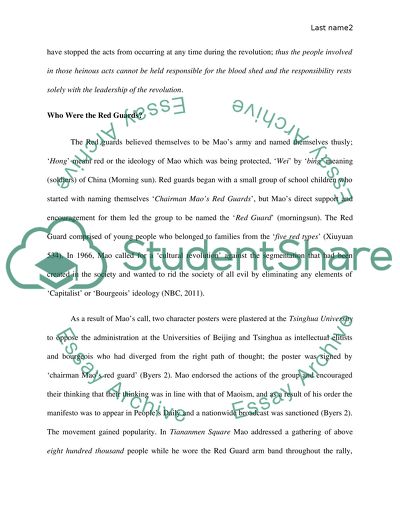Cite this document
(“The Red Guards of Chinese Cultural Revolution Research Paper”, n.d.)
Retrieved from https://studentshare.org/history/1473998-the-red-guards-of-chinese-cultural-revolution
Retrieved from https://studentshare.org/history/1473998-the-red-guards-of-chinese-cultural-revolution
(The Red Guards of Chinese Cultural Revolution Research Paper)
https://studentshare.org/history/1473998-the-red-guards-of-chinese-cultural-revolution.
https://studentshare.org/history/1473998-the-red-guards-of-chinese-cultural-revolution.
“The Red Guards of Chinese Cultural Revolution Research Paper”, n.d. https://studentshare.org/history/1473998-the-red-guards-of-chinese-cultural-revolution.


